So my project is to create a program that will detect words on a Scrabble board based on the position where the user clicks on the image. My question is the following:
- How to store the detected letters into strings/words? (i.e. check each contour in sequence and depending on whether it is close to another contour then add it as the next element of a string)
The program draws the contours around each letter based on moments and contour areas. Any corrections in the current code would be much appreciated. It works but obviously it could be written better. Here are the obtained images:
binary:

color:

#include <opencv2\core.hpp> //cv::Mat etc
#include <opencv2\imgproc.hpp> // algorithms
#include <opencv2\highgui.hpp> // input, output
#include <iostream>
#include <fstream>
using namespace std;
using namespace cv;
Mat image, labimg, perspective, gaussian, binary, gray, erodedimg, dilatedimg, newmat, newmat2, transformed, transformed2;
Mat_<Point> capturePoint; // point coordinates, global variable;
vector< vector <Point> > contours; // Vector for storing contour
vector< Vec4i > hierarchy;
int largest_contour_index = 0;
double largest_area = 0;
void on_mouse(int e, int x, int y, int d, void *ptr)
{
if (e == EVENT_LBUTTONDOWN)
{
Point*p = (Point*)ptr;
p->x = x;
p->y = y;
//Point center = *p;
cout << *p << endl;
//destroyWindow("My Window");
}
}
void myperspective()
{
Mat dst = image.clone(); //(image.rows, image.cols, CV_8UC1, Scalar::all(0)); //create destination image
findContours(binary.clone(), contours, hierarchy, RETR_EXTERNAL, CHAIN_APPROX_SIMPLE, Point(0,0)); // Find the contours in the image
for (int i = 0; i < contours.size(); i++)
{
double a = contourArea(contours[i], false); // Find the area of contour
if (a > largest_area)
{
largest_area = a;
largest_contour_index = i; //Store the index of largest contour
}
}
drawContours(dst, contours, largest_contour_index, Scalar(0, 255, 0), 2, 8, hierarchy);
//imshow("Display window", dst);
//waitKey(0);
vector<vector<Point> > contours_poly(1);
approxPolyDP(Mat(contours[largest_contour_index]), contours_poly[0], 10, true);
Point2f output_points[4];
Point2f input_points[4];
cout << contours_poly[0].size();
int min_x = image.cols;
int min_y = image.rows;
int max_x = 0;
int max_y = 0;
int myxmin = image.cols;
int myxmin2 = image.cols;
int myxmax = 0;
int myymin = image.rows;
for (int k = 0; k < contours_poly[0].size(); k++)
{
if (contours_poly[0][k].x < min_x && contours_poly[0][k].y < min_y)
{
min_x = contours_poly[0][k].x;
min_y = contours_poly[0][k].y;
}
else if (contours_poly[0][k].x <= min_x && contours_poly[0][k].y > max_y)
{
//min_x = contours_poly[0][k].x;
max_y = contours_poly[0][k].y;
myxmin2 = contours_poly[0][k].x;
}
else if (contours_poly[0][k].x > max_x && contours_poly[0][k].y > max_y)
{
max_x = contours_poly[0][k].x;
//max_y = contours_poly[0][k].y;
}
else if (contours_poly[0][k].x < max_x && contours_poly[0][k].y <= (min_y+20) && contours_poly[0][k].x > myxmax)
{
myxmax = contours_poly[0][k].x;
}
else if (contours_poly[0][k].x > min_x && contours_poly[0][k].y <= min_y && contours_poly[0][k].x < myxmin)
{
myxmin = contours_poly[0][k].x;
myymin = contours_poly[0][k].y;
}
else
{
cout << "NA" << endl;
}
}
input_points[0] = Point(myxmin, myymin);
input_points[1] = Point(myxmax, min_y);
input_points[2] = Point(myxmin2, max_y);
input_points[3] = Point(max_x-30, max_y+5);
output_points[0] = Point(0, 0);
output_points[1] = Point(image.cols, 0);
output_points[2] = Point(0, image.rows);
output_points[3] = Point(image.cols, image.rows);
Mat transmtx = getPerspectiveTransform(input_points, output_points);
transformed = Mat::zeros(image.rows, image.cols, CV_8UC3);
transformed2 = Mat::zeros(image.rows, image.cols, CV_8UC3);
warpPerspective(binary, transformed, transmtx, image.size());
warpPerspective(image, transformed2, transmtx, image.size());
}
int main(int argc, char** argv)
{
image = cv::imread("ideal.png"); // Read image from file
namedWindow("Display window", WINDOW_NORMAL);
cv::GaussianBlur(image, gaussian, Size(3, 3), 0);
cvtColor(gaussian, gray, CV_BGR2GRAY);
cv::adaptiveThreshold(gray, binary, 255, ADAPTIVE_THRESH_GAUSSIAN_C, THRESH_BINARY_INV, 7, 2);
//createTrackbar("Threshold:", "Display window2", &thresh_elem, max_thresh_size, Threshold);
//createTrackbar("Kernel:", "Display window2", &kernel_size, max_kernel_size, Threshold);
//imshow("Display window", binary);
//waitKey(0);
myperspective();
vector<vector<Point>>lettercontours;
vector<Vec4i> hierarchyoflet;
findContours(transformed, lettercontours, hierarchyoflet, CV_RETR_LIST, CV_CHAIN_APPROX_TC89_L1);
int idx = 0;
vector<Point>contour;
//double table[100][7];
fstream humom("humombase.txt", ios::out);
double hu[7];
for (int i = 0; idx >= 0; idx = hierarchyoflet[idx][0], i++)
{
double area = contourArea(lettercontours[i]);
Moments lettermoments = moments(lettercontours[i]);
HuMoments(lettermoments, hu);
humom << hu[0] << " " << hu[1] << " " << hu[2] << " " << hu[3] << " " << hu[4] << " " << hu[5] << " " << hu[6] << "\n";
if (area > 500 && area < 1800 && hu[0] > 0.16292 && hu[0] < 0.18292 && hu[1]> 0.000534 && hu[1] < 0.000665 && hu[2]> 0.000162 && hu[2] < 0.000339)
{
cout << "D";
drawContours(transformed2, lettercontours, idx, Scalar(0, 255, 255), 2, 8, hierarchyoflet, 3);
}
else if (area > 500 && area < 1800 && hu[0] > 0.257 && hu[0] < 0.283 && hu[1]> 0.0423 && hu[1] < 0.0473 && hu[2]> 1.044e-05 && hu[2] < 8.475e-05)
{
cout << "I";
drawContours(transformed2, lettercontours, idx, Scalar(0, 255, 255), 2, 8, hierarchyoflet, 3);
}
else if (area > 500 && area < 1800 && hu[0] > 0.243 && hu[0] < 0.263 && hu[1]> 0.000837 && hu[1] < 0.000857 && hu[2]> 0.000136 && hu[2] < 0.000156)
{
cout << "S";
drawContours(transformed2, lettercontours, idx, Scalar(0, 255, 255), 2, 8, hierarchyoflet, 3);
}
else if (area > 500 && area < 1800 && hu[0] > 0.287 && hu[0] < 0.3 && hu[1]> 0.009 && hu[1] < 0.015 && hu[2]> 0.019 && hu[2] < 0.021)
{
cout << "T";
drawContours(transformed2, lettercontours, idx, Scalar(0, 255, 255), 2, 8, hierarchyoflet, 3);
}
else if (area > 500 && area < 1800 && hu[0] > 0.28 && hu[0] < 0.3 && hu[1]> 0.002 && hu[1] < 0.003 && hu[2]> 0.0005 && hu[2] < 0.0007)
{
cout << "U";
drawContours(transformed2, lettercontours, idx, Scalar(0, 255, 255), 2, 8, hierarchyoflet, 3);
}
else if (area > 500 && area < 1800 && hu[0] > 0.191 && hu[0] < 0.197 && hu[1]> 0.0001 && hu[1] < 0.005 && hu[2]> 4.39e-05 && hu[2] < 0.0003)
{
cout << "R";
drawContours(transformed2, lettercontours, idx, Scalar(0, 255, 255), 2, 8, hierarchyoflet, 3);
}
else if (area > 500 && area < 1800 && hu[0] > 0.156 && hu[0] < 0.176 && hu[1]> 4.606e-05 && hu[1] < 4.806e-05 && hu[2]> 4.89e-05 && hu[2] < 5e-05)
{
cout << "B";
drawContours(transformed2, lettercontours, idx, Scalar(0, 255, 255), 2, 8, hierarchyoflet, 3);
}
else if (area > 500 && area < 1800 && hu[0] > 0.24 && hu[0] < 0.28 && hu[1]> 0.001 && hu[1] < 0.004 && hu[2]> 0 && hu[2] < 0.0002)
{
cout << "E";
drawContours(transformed2, lettercontours, idx, Scalar(0, 255, 255), 2, 8, hierarchyoflet, 3);
}
else if (area > 500 && area < 1800 && hu[0] > 0.15 && hu[0] < 0.25 && hu[1]> 0.0004 && hu[1] < 0.0006 && hu[2]> 0.004 && hu[2] < 0.006)
{
cout << "A";
drawContours(transformed2, lettercontours, idx, Scalar(0, 255, 255), 2, 8, hierarchyoflet, 3);
}
else if (area > 500 && area < 1800 && hu[0] > 0.33 && hu[0] < 0.35 && hu[1]> 0.02 && hu[1] < 0.04 && hu[2]> 0.008 && hu[2] < 0.01)
{
cout << "M";
drawContours(transformed2, lettercontours, idx, Scalar(0, 255, 255), 2, 8, hierarchyoflet, 3);
}
else if (area > 500 && area < 1800 && hu[0] > 0.29 && hu[0] < 0.32 && hu[1]> 0.027 && hu[1] < 0.034 && hu[2]> 0.009 && hu[2] < 0.015)
{
cout << "L";
drawContours(transformed2, lettercontours, idx, Scalar(0, 255, 255), 2, 8, hierarchyoflet, 3);
}
else if (area > 500 && area < 1800 && hu[0] > 0.23 && hu[0] < 0.25 && hu[1]> 0.0009 && hu[1] < 0.0015 && hu[2]> 0.0005 && hu[2] < 0.0007)
{
cout << "K";
drawContours(transformed2, lettercontours, idx, Scalar(0, 255, 255), 2, 8, hierarchyoflet, 3);
}
else if (area > 500 && area < 1800 && hu[0] > 0.27 && hu[0] < 0.29 && hu[1]> 0.0002 && hu[1] < 0.0003 && hu[2]> 0.019 && hu[2] < 0.021)
{
cout << "Y";
drawContours(transformed2, lettercontours, idx, Scalar(0, 255, 255), 2, 8, hierarchyoflet, 3);
}
else if (area > 500 && area < 1800 && hu[0] > 0.15 && hu[0] < 0.17 && hu[1]> 0.001 && hu[1] < 0.002 && hu[2]> 2.2e-07 && hu[2] < 2.5e-07)
{
cout << "O";
drawContours(transformed2, lettercontours, idx, Scalar(0, 255, 255), 2, 8, hierarchyoflet, 3);
}
else if (area > 500 && area < 1800 && hu[0] > 0.28 && hu[0] < 0.30 && hu[1]> 0.022 && hu[1] < 0.024 && hu[2]> 0.002 && hu[2] < 0.0025)
{
cout << "W";
drawContours(transformed2, lettercontours, idx, Scalar(0, 255, 255), 2, 8, hierarchyoflet, 3);
}
else
{
drawContours(transformed, lettercontours, idx, Scalar(0,0,0), CV_FILLED, 8, hierarchyoflet);
}
}
Mat element = getStructuringElement(MORPH_CROSS, Size(3, 3), Point(1, 1));
for (int o = 0; o < 1; o++)
{
erode(transformed, erodedimg, element);
dilate(erodedimg, dilatedimg, element);
transformed = dilatedimg;
}
imshow("Display window", transformed);
waitKey(0);
imshow("Display window", transformed2);
namedWindow("Display window2", WINDOW_NORMAL);
Point p;
setMouseCallback("Display window2", on_mouse, &p); //set the callback function for any mouse event
imshow("Display window2", transformed2);
waitKey(0); //wait till any key is pressed
return 0;
}
